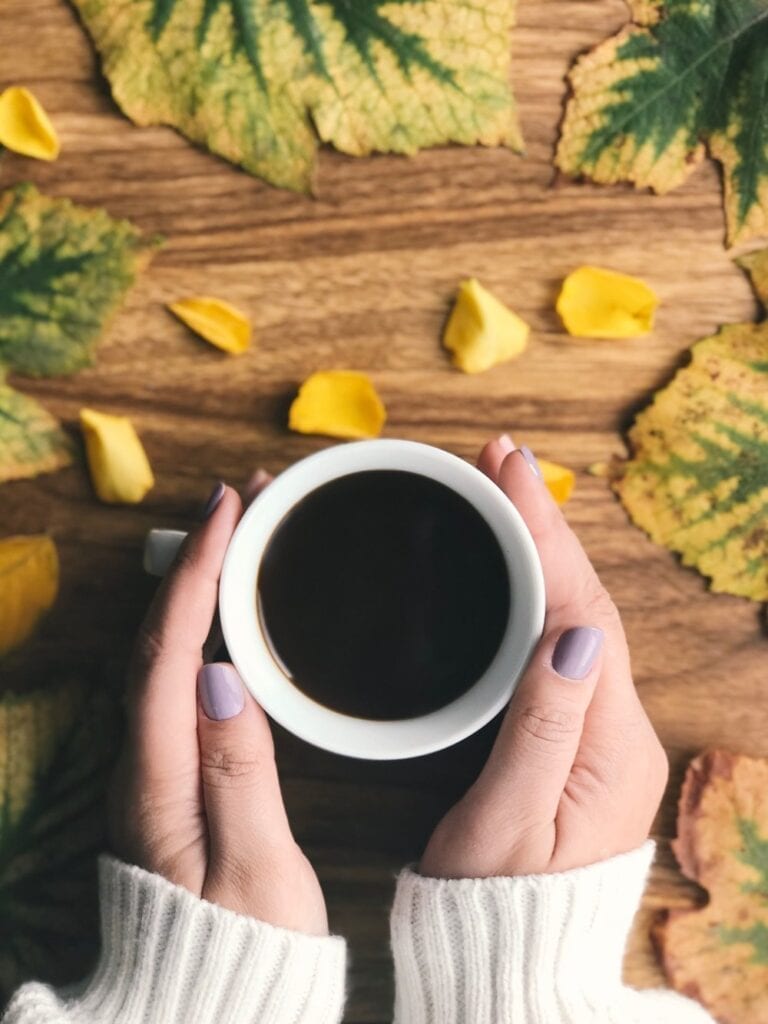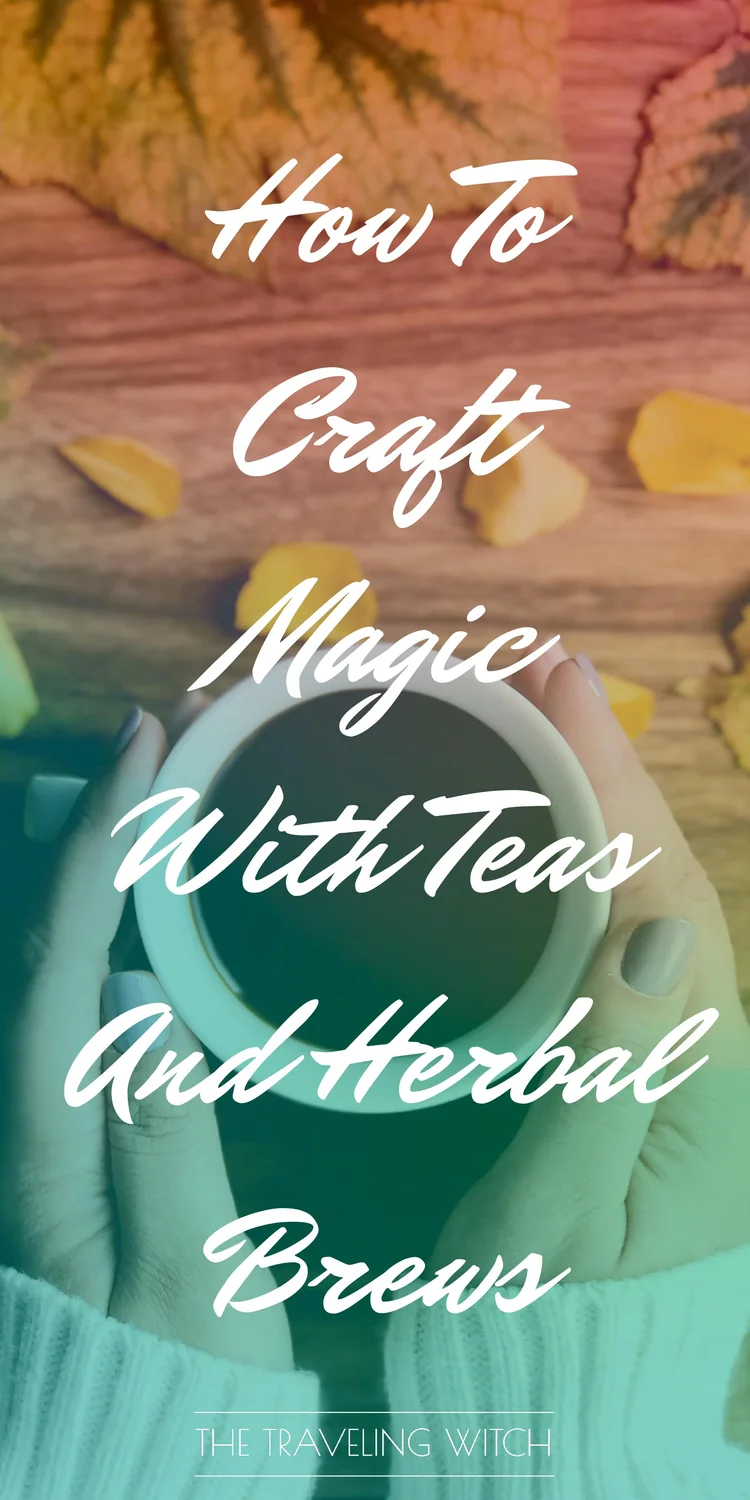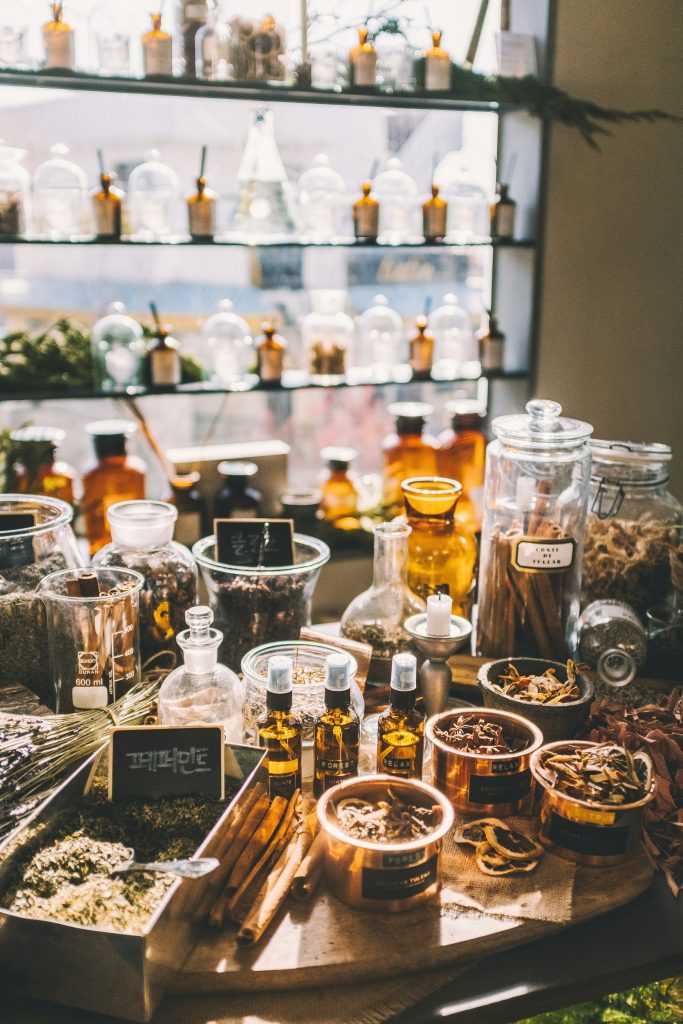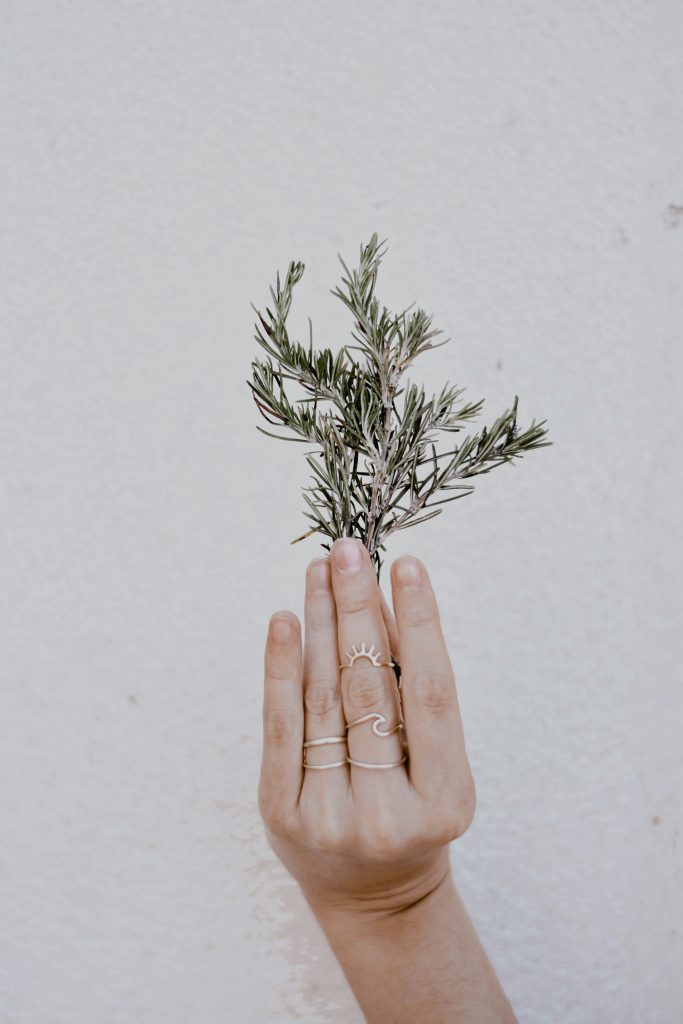Sometimes, the simplest acts can work potent magic when done with the correct intent and attention. A doodle on a notebook can double as a sigil, lighting a candle can serve as a spell, and brewing the right cup of tea can be witchcraft incognito. This innocuous form of magic is a prime example of how a little ingenuity can squeeze magic out of the most mundane daily rituals.

Witchcraft worked with tea is both discreet, allowing you to work magic comfortably in any environment, and accessible to almost everyone. There are a ton of ways to use tea in your witchcraft, from divination to casting spells, to adding a magical oomph to crafts, altar work, and more. Here are some of the most common ways to practice the craft using tea.
Tea Leaf Reading
This is easily the first place everyone’s mind goes when it comes to witchcraft and tea. Reading tea leaves, or tasseography is a form of divination done by interpreting the patterns of tea leaves left in a teacup after the tea has been drunk. This form of divination dates all the way back to the 17th century shortly after the introduction of tea to Europe. Some diviners use specialized teacups for reading tea leaves but you can read tea leaves just as easily with a regular teacup from your cupboard. Just don’t go using a coffee mug as the shape makes reading the leaves quite difficult!
Reading tea leaves is a fairly simple process. Add your loose tea leaves to the teacup and pour hot water into the cup. Allow the tea to brew to your liking and enjoy it as you normally would. Some diviners say that the tea should be taken without milk or sugar but I don’t find that these things alter my results much. Next, place a napkin on the saucer and when you’re finished drinking your tea, swirl the cup 3 times and turn it upside down on the saucer. Make sure that you have only dregs left when you do this, enough liquid that the tea leaves can move but not so much that the leaves will drain right out of the cup when it’s upturned. It can take a bit of practice to figure this part out but it isn’t terribly difficult once you’ve developed an eye for it. Now you can turn the cup right side up and interpret the shapes and symbols left in the tea leaves!
There are many ways to analyze the leaves left in your cup and everything from the direction your cup handle is facing to the height of the leaves on the side of the cup can influence an interpretation. If this form of divination interests you, I would suggest picking up a book on tea leaf reading that contains an explanation of the various ways to interpret your cup and an extensive symbol dictionary.
Crafting Your Own Tea Blends
Pre-made tea blends are typically designed with taste in mind but you can craft your own tea blend with a more magical purpose. Combining herbs for their magical properties and brewing them into teas allows you to create homemade potions and spells with ease. You can even build a repertoire of magic herbal tea recipes that you can use to quickly and easily case a wide variety of spells. Here are a few of my favorite herbs and spices to use as well as a few of my own tea spells.
Chamomile – Healing, attracts abundance and opens the energy to be more receptive.
Rose hips – Very healing, draws good luck
Ginger – Draws success, prosperity, confidence, sensuality, and a sense of adventure.
Orange peel – Draws luck and money
Cardamom – Good for love, lust, and keeping a lover faithful
Dandelion root – Good for dream magic, divination, and spirit work
Ginseng – Used for love, beauty, and protection
Hibiscus – Used for attracting love, divination, and dream magic
Honeysuckle – Draws prosperity and quick abundance
Lemongrass – Cleansing and psychic opening
Lemon – Cleansing and removing energetic blockages
Bergamot – Protection from evil and illness, stops magical interference
Protection & Cleansing Tea
- 1 pt bergamot
- 1 pt black tea
- 1 squeeze of lemon
(note: this is essentially just earl grey tea with lemon which is why I LOVE this blend for quick cleansing)
Love Drawing Tea
- 1 pt hibiscus
- 1 pt ginger
- 1 pt ginseng
Quick Luck
- 1 pt orange peel
- 1 pt rose hips
- 1 pt chamomile
Adding Magical Tea In Other Parts Of Your Life
As much as I’m sure many of us love drinking tea, there are also people out there who are decidedly NOT tea drinkers. For those of you who cringe at the thought of sipping on a mug of hot leaf water, there are still ways you can incorporate these kinds of herbal infusions into your craft.
Use tea as a base for recipes
Does your recipe call for water? You can substitute a weakly brewed tea for water in many cases without affecting the taste of the food overmuch. If the food you’re cooking is particularly light flavored, you can even use a cold infusion. Simply place your herbs into the desired amount of water in your fridge for an hour. This allows the energy of the plants to infuse the water without imparting too much of the taste. Cold infusion is actually the ideal way to extract the greatest amount of plant energy from your botanicals since cool or cold water is able to accept more energy than warm or hot water.
Be warned though! Stronger tasting ingredients like ginger and citrus will likely come through in the flavor of the water despite cold steeping. If you want your infusion to still basically taste like water it’s best to avoid these more intense ingredients.
Adding tea to baths
Using teas in cleansing baths is a perfect way to add magic to your self-care routine! You can use a cold or hot infusion for this method and incorporate herbs that you might not normally put together due to taste conflicts. Since you’ll be soaking in this tea rather than drinking it, it won’t matter what it tastes like! For baths, I recommend brewing up a fairly large amount of tea, typically I use about 8 cups of boiling water and 1/2 – 1 cup of herbs. I let the herbs steep until the water is a comfortable temperature (20-30 minutes depending on the time of year) and then add it to my bath water.
Using tea at the altar
There are many ways to use tea on your altar, using tea as an offering is a simple and very homey way to show respect to a spirit or deity. Choose herbs that your particular being prefers and brew up a cup for them once or twice a week. If you like to be sociable with them, you can even brew a cup for yourself as well and have tea with them! This can be a lovely way to build familiarity and closeness with the important spirits in your life.
Keep in mind though, that not every spirit will want tea! I’ve had spirits who, on the offer of tea stated that they’d rather have a spot of whiskey or some of my dinner. It’s also a good idea to be sure you know how the spirit takes their tea. You wouldn’t serve tea to a friend without offering sugar or cream and it’s polite to offer the same to your spirit friends too.
The other way I like to use tea on my altar is for scrying. Scrying with plain water is a fairly common method of divination but it is quite possible to scry with other liquids as well. If I have a subject that I would particularly like to focus my scrying on I’ll brew up a tea with herbs relating to that intention and use the tea in my black scrying bowl instead of water. Be careful what herbs you choose however since certain herbs with particularly potent energies may skew the messages you receive. Try to stick with botanicals that have lighter and more general energies.
Struggling with your magic?
Take the Quiz to Discover Your #1 Witchcraft Obstacle

Updated on August 20, 2023 by Avery Hart




I love your tea recipes. I’m starting to try my hand at some of my own.
I love using herbals in my baths after work (I’m a bartender and pick up a lot of extra energy gunk), but when I’m not sure if my herbs are food quality, I put them into a coffee filter and tie it up with a small rubber band and throw it right in the bath water with me. It’s been great after work, before bed.
I have a question about the offerings you suggested. I have an outside altar near a check where I make offerings. I’m assuming animals eat the food I leave. How do you go about making food and drink offerings when inside? I have an inside altar as well I use for other purposes.
Why did I not think of using herbs and teas this way before! This is fantastic! Thank you, blessed be.